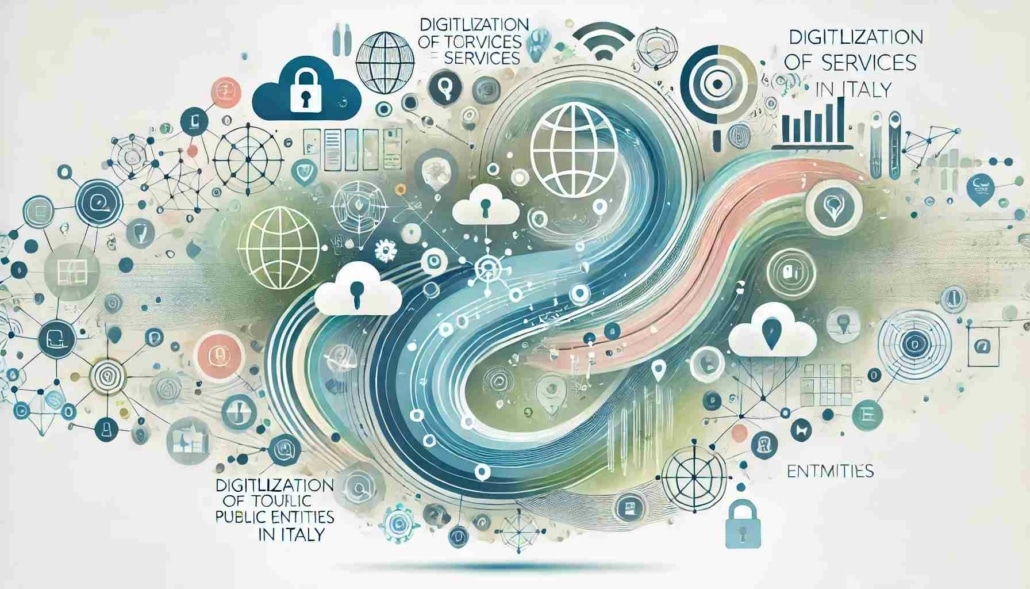Guide to Digitalizing Tourism Services for Public Administration in Italy

Introduction to the Digitalization of Italian Public Administration
The digitalization of tourism services is essential for the development and modernization of Italian Public Entities.
The Three-Year Plan for Public Administration Digitalization 2024-2026 establishes a strategic model to enhance service efficiency and accessibility.
Public entities working in tourism benefit from these directives, improving access, communication, and visitor experience.
The plan proposes a framework based on strategic, technological, and operational components, useful for destination managers and tourism consultants.
1. Organization and Change Management
A core element of digitalization is effective change management.
The Three-Year Plan advocates for an approach that includes the digital administrative ecosystem and the Digital Transition Officer.
Tourism entities should create a digitalization roadmap to manage tourist flows, effectively communicate with visitors, and promote tourism innovation. Additionally, institutional collaboration is vital to foster synergy and maximize outcomes.
2. Procurement and Resources for Digital Transformation
Procurement and financial resources are essential for implementing innovative digital infrastructures and tools.
The Plan devotes particular attention to strategic procurement for digital transformation, allowing efficient investment planning and management.
For tourism-focused public entities, collaborating with tourism experts and project managers is vital to optimize costs and secure access to advanced technologies and innovative services.
3. Technological Components: Services and Platforms
The Plan indicates that digital services must be designed with accessibility and user-centered design in mind.
In tourism, this means developing interoperable e-services via PDND (National Data Digital Platform, in Italian: Piattaforma Digitale Nazionale Dati), which offers easy information access for visitors and multilingual support.
The PDND, or National Data Digital Platform, is an Italian platform that allows public administrations to securely share and access data in an interoperable manner.
The goal of the PDND is to simplify information exchange between entities, reduce data duplication, and improve digital service efficiency for citizens and businesses.
Digital platforms should guarantee interoperability and security, facilitating access to information about tourism services while also collecting data useful for destination marketing.
Specific Examples for Tourism:
- Creating interactive portals for tourists with information on attractions, transport, and accommodations.
- Integrating booking and payment systems with public platforms.
- Multilingual accessibility to improve communication and visitor hospitality.
4. Data and Artificial Intelligence for Tourism
The Three-Year Plan includes a specific section on data and artificial intelligence, which can be powerful tools for tourism development.
Open data and data governance allow tourism entities to analyse visitor flows and improve service planning.
With support from specialized consultants, public administration can use artificial intelligence to optimize tourism marketing strategies, anticipate visitor needs, and improve operational efficiency.
5. Cybersecurity and Cloud
In the tourism context, cybersecurity is essential for protecting visitor data and building user trust.
The Plan emphasizes the importance of secure infrastructures and cloud systems to enhance service reliability.
For public entities in tourism, a secure cloud infrastructure allows for real-time data collection, storage, and analysis, improving information management and operational efficiency.
6. Tools for Smart Areas in Tourism
The Three-Year Plan introduces tools for developing Smart Areas, which can also be applied in tourism to create advanced digital services tailored to local needs.
A Smart Area is a geographical or urban area where advanced digital technologies are integrated to improve public services and quality of life for residents and visitors alike.
Creating a Smart Area for tourism means integrating technologies such as public Wi-Fi, real-time information, and digital access points to facilitate the visitor experience, tailoring it to local characteristics, and enhancing the destination’s value.
Conclusion
Italian public entities can transform their tourism services through digitalization, increasing the appeal and competitiveness of destinations.
With support from a tourism expert or destination manager, public administration can implement the Three-Year Plan for Public Administration Digitalization 2024-2026 to provide effective services for citizens and visitors.
For more details, consult the Three-Year Plan for Public Administration Digitalization 2024-2026 at this link:
https://docs.italia.it/italia/piano-triennale-ict/pianotriennale-ict-doc/it/2024-2026/index.html
***
Continue Exploring Innovation and Technology in Tourism!
If you want to dive deeper into innovation in tourism, I invite you to read my book: Andrea Rossi, “Digital Media and Tourism”, 2024.
.
Image: Digital Tourism Services for Public Administration by Andrea Rossi made with Dall-E


Leave a Reply
Want to join the discussion?Feel free to contribute!